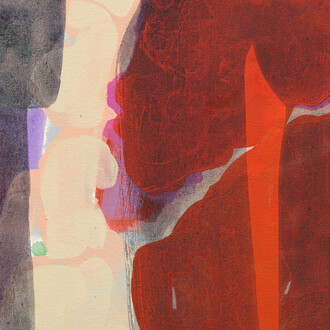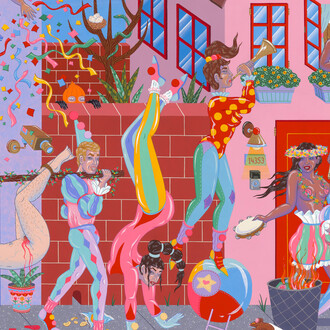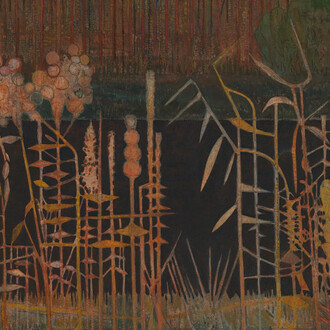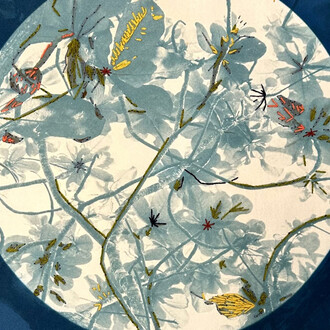Vielmetter Los Angeles is excited to present Positioner, a solo exhibition of new works by Paul Mpagi Sepuya. The exhibition marks Sepuya’s third exhibition with the gallery and will be on view from May 31 through July 19, 2025.
Positioner (noun) is defined as “one that positions” and as “a mechanical device for placing or holding a body in position during an operation.” In Sepuya’s photographs, there are numerous “positioners” or “support structures” that anchor his compositions in the studio space: his own body, tripods, props such as benches or stools, mirrors, curtains, and stainless steel gazing balls. These “positioners” are stabilizing forces within Sepuya’s photographic space as the viewer orients themselves within the space of the image. The gazing balls reflect an outward image of the scene behind the camera or the space behind the image, both revealing and underscoring the studio space and the process of image-making.
Sepuya utilizes the gazing ball, a centuries-old object turned industrialized prop, to interject into the process of perception and representation. In Conversation with gazing ball (_DSF8251), two figures with gazes cast downwards flank the gazing ball situated in the center of the image which reveals the photographer’s studio in a fisheye lens perspective. The black curtain backdrop dramatizes the centrifugal force of the gazing ball’s refracted space and focuses the viewer’s attention on the object and figures surrounding it. Sepuya thus centralizes the idea of the photographer and the positioner occupying space within the frame of the image, rather than being positioned as a controlling force outside of the image.
Referencing the visual ploy of reflection used to illustrate sculptural space in pictures, Sepuya also refers to 19th-century photographic customs of positioning a mirror at an angle to reveal the figure or object in the background. This reference point extends Sepuya’s examination of the image and image-making space and critiques the relationship between the model and photographer. Sepuya creates a symbiotic relationship between the photographer and the photographed, positioning his camera and himself strictly in relation to his friends, focusing on seeing themselves as opposed to being seen by the viewer. This subtle shift in power dynamics creates a space for Queer bodies’ self-actualization and aims to make bodily autonomy visible in the process of image-making.
The impulse to make the mechanics of the photographic process visible is also explored in Sepuya’s dye-sublimation prints. These works, the majority of which were taken at night with white light, are negative images. The negative image creates a forensic quality, making evident the physical marks (like smudges on the mirror) and heightening them. These imprints suggest a taxonomy of the photographic process and unveil the often unseen elements of the pictorial space.
The works in Positioner are burgeoned from years of experimentation in the studio and collaboration with friends. Focusing on smaller-scale works, Sepuya’s photographs are an intimate, yet powerful portrait of his community, threading numerous themes into a singular and compelling aesthetic.
















